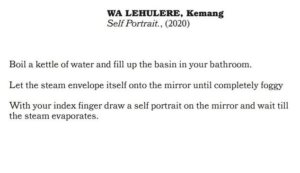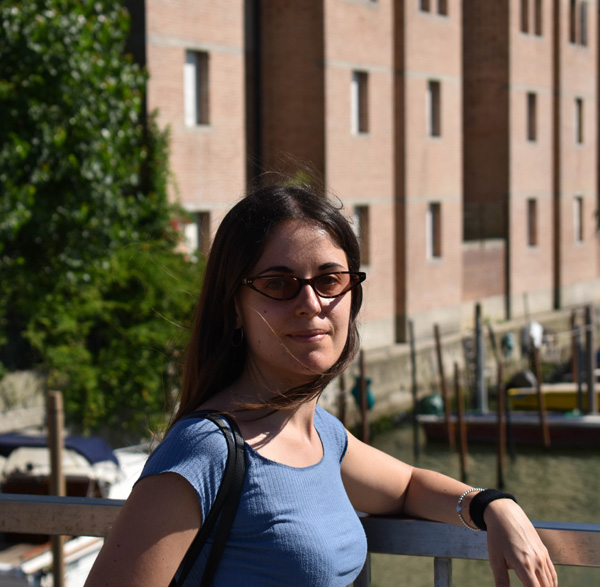If you have not yet come across the Instagram profile of one of the most influential protagonists of the art world, then type Hans Ulrich Obrist and be amazed by the contents of his page. Critic and art historian, but above all curator, as there are few and perhaps could be said to be unique, Obrist knows how to use social media to promote art, succeeding in the arduous task of dominating them without being dominated by them. One of the contents that he proposed during 2020 and which he continues to offer this year is called “Do it” and was born from a conversation that took place in 1993 with the artists Bernard Lavier and Christian Boltanski about the possibility of staging a performance based on instructions written by artists and interpreted by others.
Obrist considers conversation a permanent school from which to draw information, but also an important contribution to the art world, so much so that he records his debates and publishes them in the volume “Infinite Conversations” for Fondation Cartier. In this case, starting from a conversation, “Do it” takes shape and in 1995 the instructions of the artists called by Obrist see a first publication while in 2020 they are resumed for a new and expanded edition.
It is no coincidence that “Do it” is re-proposed this last year, when the changed living conditions mean that the relationship with art has considerably changed: direct experience is often no longer possible and therefore museums and galleries strive to make their content accessible online through infinite and undifferentiated series of images and videos. The art world is pushed to rethink and renew its offer both by riding the digital revolution and by modifying its contents.
“Do it”, which can be downloaded for free online and periodically posted by Obrist on Instagram, is a project that aims to review the relationship between public and art. A relationship in which the public often plays a passive role. Here, instead, it becomes the protagonist. It is the public who builds the sense of the project. The focus shifts from what to who, how, where and when. Let me explain: “Do it” conjugates verbs in the second singular person. Even if it does not know its interlocutor, it speaks to him. It makes him feel special, involved, protagonist, but also an accomplice in dialogue with art.
Those who come across the instructions can decide whether to read them with their eyes or aloud, out of curiosity or whether to interpret them by truly becoming part of the work. By becoming its protagonist, the one who interprets the project in a personal and therefore unique way, can define himself as a part-time performer without the need for the system’s consent. He can choose if and possibly with whom to interpret it or in front of which audience. How to do it and with what attitude. In what place and what time. And choose whether to share the result on the web.
It is therefore a project that wants to question the roles, but also the container of art, no longer galleries, museums, not the urban context of street art, but potentially any place: neither the places dedicated to culture nor those of counterculture, but the house, a private garden, a room shared with a roommate, a hotel lobby, a balcony. The artist who writes the instructions and the curator who conceived the project are no longer masters of the result that this will have, nor are they aware of where and when the performance will take place.
On the contrary, the public is. An audience probably of experts, emerging artists, students or curious people, who knows. It is amusing to think that anyone can be a performer for a day, an hour or a few minutes and that there are no more coordinates for art: the actors of the process can no longer meet in a given place at a given time to watch the performance, but this is beyond their planning. The public becomes the protagonist of the work of art. Art and performance in particular take on a playful and engaging aspect, as it often happens in the exhibitions of the Swiss curator.
Instructions can make us live an artistic experience, but they can also simply make us smile by imagining it, especially in this moment of planetary crisis in which it is stimulating to discover new and different ways of making art and to shorten the distance between artists and spectators. Obrist encourages contact between these two worlds and seeks their contamination, an exchange of roles that favors the birth of new perspectives for art both from an expressive and a fruition point of view. Since his first exhibition curated at the Serpentine Gallery in London, “Take me (I’m yours)”, Obrist has tried to invent new ways and create extraordinary experiences to surprise the public by allowing people to interact with the works. Furthermore, with “Do it”, the partnership with artists is increasingly consolidated, who often become accomplices of the curator in the conception of works and artistic experiences as well as in the persistent search for overcoming the customs and rules that characterize the art system.
Vittoria Silvaggi
Info:
 Kemang Wa Lehulere – Do it N. 132
Kemang Wa Lehulere – Do it N. 132
 Kolar Jiri – Do it N. 121
Kolar Jiri – Do it N. 121
 Marina Abramovic – Do it N. 64
Marina Abramovic – Do it N. 64
Cover image: Hito Steyerl – Do it N. 134

Born in Rome in 1992, she obtained a degree in Architecture from the University of Rome La Sapienza with a thesis in Architectural and Urban Design. She is interested in art and architecture and their mutual contamination.






NO COMMENT